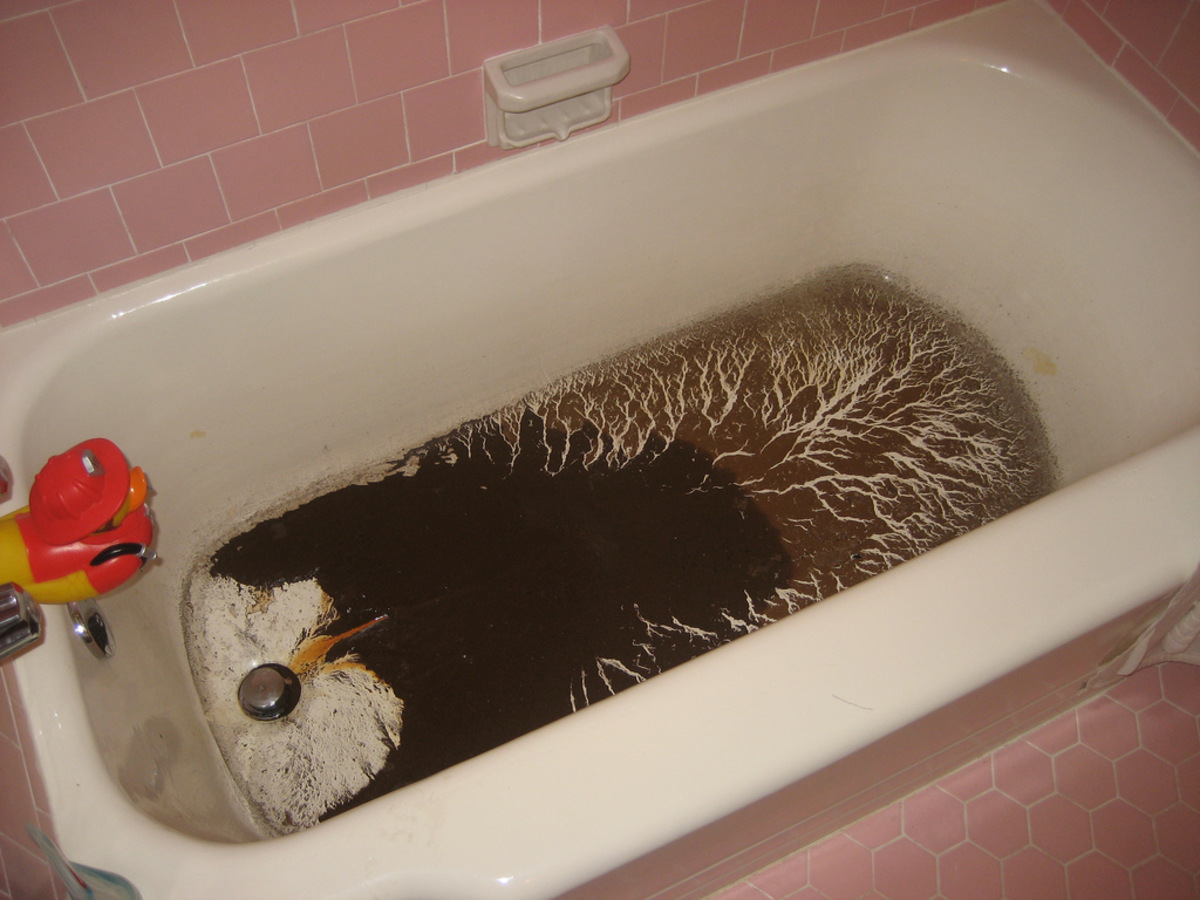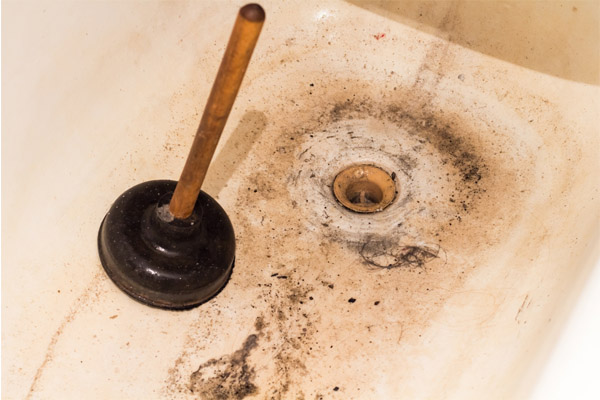Essential Explanations for Drainage in the Bathtub
Essential Explanations for Drainage in the Bathtub
Blog Article
Each person seems to have their personal thinking about Why sewage is coming up through your bathtub.

Sewer backup in the bathtub can be a distressing and unsanitary problem for any home owner. Not just is it inconvenient, but it also postures severe health risks and indicates underlying concerns with the plumbing system. Understanding why sewage is showing up with the tub is important for taking suitable action to attend to the problem effectively.
Introduction to the Issue
Understanding the Issue
When sewer draws back up into the tub, it's a clear indication of a problem with the drainage system. The wastewater that needs to be streaming far from your home is rather locating its back right into your space, which can lead to significant damages and carcinogen.
Prospective Causes
Numerous elements can contribute to sewage backup in the bath tub. From obstructions in the sewage system line to problems with the plumbing facilities, determining the root cause is important for finding an option.
Usual Reasons for Sewage Back-up
Obstructions in the Sewer Line
Among the most common sources of sewage back-up is a clog in the drain line. This can happen as a result of the build-up of debris, oil, or international items in the pipelines, stopping proper flow and triggering sewer to support right into your tub.
Tree Root Intrusion
Tree origins looking for dampness and nutrients can penetrate drain lines with little splits or joints. Over time, these origins can expand and broaden, creating considerable damage to the pipelines and causing sewage back-up problems.
Aging Facilities
Older homes might have outdated plumbing systems that are more prone to corrosion, splits, and damage. As pipes age, they come to be a lot more prone to leakages and clogs, boosting the possibility of sewer backup events.
Heavy Rainfall or Flooding
During periods of heavy rainfall or flooding, the drain system may become overwhelmed with excess water, triggering back-ups and overflows. This can result in sewage backing up into bathtubs and various other components inside the home.
Health Threats Connected With Sewage Back-up
Contamination of Water Supply
Sewage back-up can infect the water in your home, posing a major health threat to you and your household. Direct exposure to infected water can lead to intestinal issues, skin infections, and other illnesses.
Spread of Disease
Sewage contains unsafe microorganisms, viruses, and bloodsuckers that can cause a range of conditions, including hepatitis, cholera, and gastroenteritis. Entering contact with sewage or polluted surfaces places you in jeopardy of infection.
Mold Growth
Dampness from sewage back-up can develop optimal problems for mold growth in your home. Mold and mildew spores can worsen respiratory problems and cause allergies in delicate individuals, making punctual clean-up necessary.
Indications of Sewer Backup
Foul Odors
Undesirable smells emanating from drains pipes or components, specifically in the shower room, might indicate sewage back-up concerns. These odors are typically strong and relentless, signifying a trouble that needs instant interest.
Slow Draining Fixtures
Bathtubs, sinks, and toilets that drain pipes slowly or not at all could be experiencing sewage back-up. If numerous components are impacted concurrently, it's likely that the issue stems from a common point, such as the primary sewer line.
Gurgling Sounds
Unusual gurgling or gurgling sounds coming from drains when water is running in other places in your house are a measure of air caught in the plumbing system. This air buildup can arise from sewer backup and must be checked out without delay.
Immediate Actions to Take
Turning Off Water System
In the event of sewage back-up, it's essential to switch off the water supply to avoid further contamination and damage. Locate the primary water shutoff valve in your house and shut it off until the issue can be fixed.
Calling a Professional Plumber
Taking care of sewer back-up is not a do it yourself task. Call an accredited plumber with experience in handling sewage-related problems to evaluate the scenario and execute required repairs or cleanups.
Avoiding Contact with Infected Water
Till the sewer backup is resolved, prevent contact with polluted water to avoid the spread of microorganisms and virus. Wear safety equipment if you must be in the damaged area and clean your hands completely later.
Preventive Measures
Regular Maintenance of Sewage System Lines
Schedule routine examinations and upkeep of your sewer lines to identify and deal with potential concerns prior to they escalate right into major problems. This can include clearing out debris, inspecting for tree origin invasion, and fixing any kind of broken pipelines.
Installing Bayou Valves
Think about installing bayou shutoffs in your plumbing system to avoid sewer from flowing back into your home during durations of heavy rainfall or flooding. These shutoffs automatically close when water draws back up, safeguarding your home from contamination.
Correct Disposal of Family Waste
Prevent flushing anything apart from toilet paper and human waste down the toilet to prevent obstructions and obstructions in the drain line. Dispose of grease, oil, and other family chemicals correctly to decrease the risk of plumbing problems.
Cleaning Up After Sewage Back-up
Sanitation Procedures
Completely sanitize and sanitize influenced locations after sewage back-up to eliminate harmful germs and prevent mold growth. Use proper cleaning products and protective gear to ensure secure and reliable cleanup.
Remediation of Influenced Locations
Repair any type of damages to flooring, walls, or fixtures triggered by sewage backup. Depending on the extent of the damages, you may require to replace carpets, drywall, or various other materials to recover your home to its pre-loss condition.
Why Is Water Backing Up in My Bathtub When I Flush My Toilet?
What to do about a sewer line clog
First, don’t bother with plunging. No amount of plunging will dislodge the clog in a sewer line. The clog is too far away. Plungers are for clogs in the toilet itself, not the sewer line. Plus, the most likely causes of a sewer clog are:
Tree roots Flushed toys or feminine products Grease buildup Those items don’t move easily. And in the case of tree roots, the roots need to be cut out of the pipe and the pipe will need to be repaired.
You’ll need a closet auger. A closet auger is a type of plumber’s snake with a protective cover to keep from scratching the delicate porcelain toilet. If the clog is further down, you may need to remove the toilet or use one of your cleanouts to get to the clog.
We also recommend doing a video inspection of the drain to ensure that the cause of the clog has been completely removed. Otherwise, you could have the same problem again in a few days or weeks.
https://mspplumbingheatingair.com/blog/why-is-water-backing-up-in-my-bathtub-when-i-flush-my-toilet

I was made aware of that article about What to Do if Sewage Starts Coming Up Through Your Bathtub from a pal on our other domain. Sharing is good. Helping people is fun. Thank you for taking the time to read it.
Information Here
Report this page